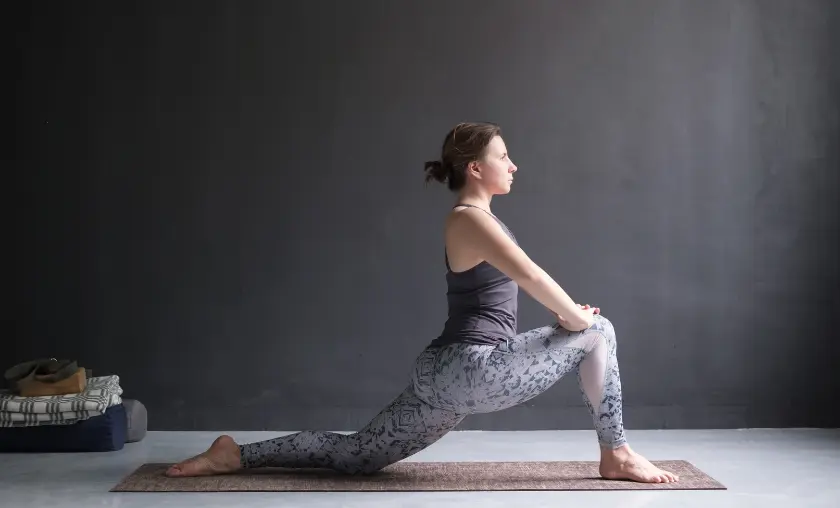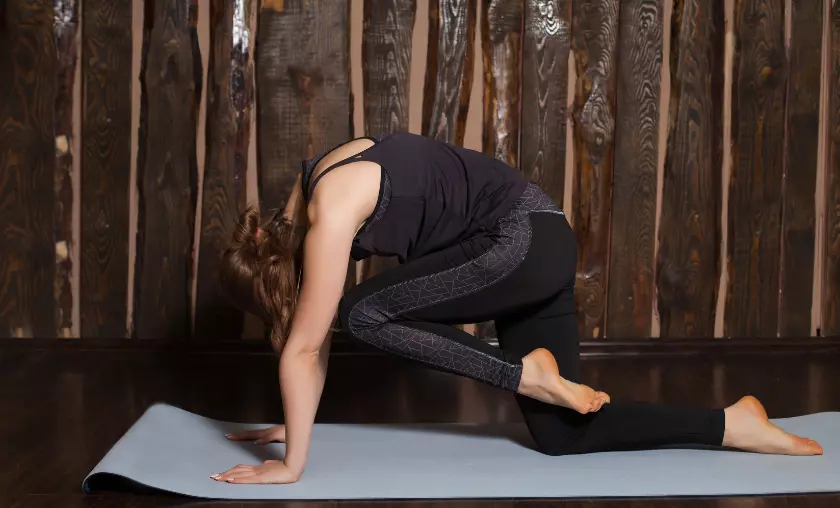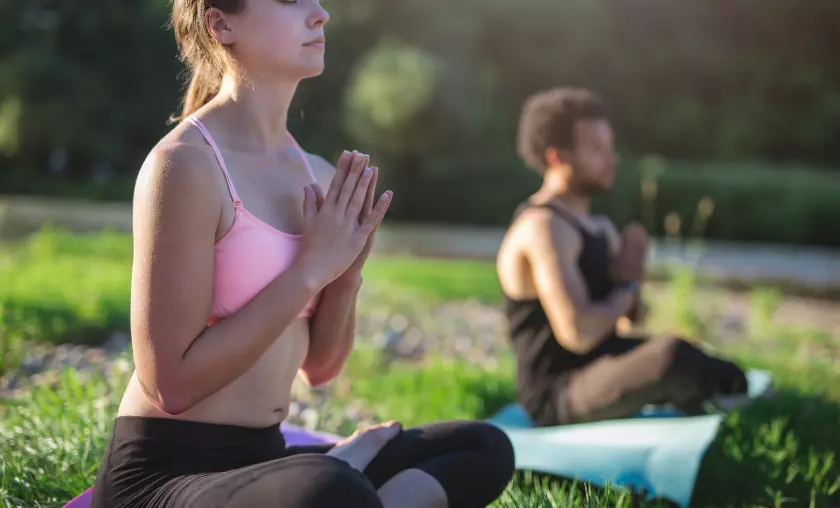Hey there, yoga enthusiasts and wellness seekers! You’re not alone if you’ve dealt with the pesky and persistent back pain. Back pain can be a real downer, affecting your daily life, mobility, and overall well-being. But fear not, for there’s a holistic and time-tested solution that can help you find relief: yoga. This blog post will delve deep into “Yoga With Back Pain” and explore how this ancient practice can become your ally in the battle against back pain.
Understanding Back Pain and Its Causes
Before we dive into the myriad benefits of yoga, it’s crucial to understand the beast we’re dealing with back pain. Back pain is a common ailment that many factors can cause. It might result from an injury, poor posture, muscle imbalance, or stress. Whatever the cause, the result is often the same – discomfort, limited mobility, and a significant impact on your quality of life.
But its complex nature makes back pain particularly tricky to deal with. It can manifest as acute pain, chronic discomfort, or occasional cramps. The good news is that yoga can be a versatile tool to address all these forms of back pain. How? Let’s find out.
The Role of Yoga in Managing Back Pain
Yoga is more than just a series of pretzel-like poses; it’s a holistic approach to wellness that encompasses the mind, body, and spirit. Regarding back pain, yoga offers a multifaceted solution that targets the root causes and provides relief gently and sustainably.
Yoga isn’t a universal solution; it’s a flexible practice that can be tailored to meet your requirements. Whether you’re a seasoned yogi or a complete beginner, there’s a yoga routine designed to alleviate your back pain and enhance your overall well-being.
Benefits of Yoga For Back Pain
Yoga With Back PainNow, let’s get down to the nitty-gritty – the incredible benefits of yoga for managing back pain.
Improved Flexibility and Range of Motion

One of yoga’s key advantages lies in its capacity to boost flexibility and enhance your range of motion. Many yoga poses involve stretching and lengthening the muscles in your back, which can alleviate stiffness and reduce the risk of future injuries. Cat-Cow Pose (Marjaryasana-Bitilasana) and Child’s (Balasana) can increase flexibility.
Strengthening Core Muscles

A strong core is the key to a healthy back. Yoga incorporates numerous poses that engage your core muscles, including Plank Pose (Phalakasana) and Bridge Pose (Setu Bandha Sarvangasana). These poses help build strength in your abdominal and back muscles, providing support and stability for your spine.
Stress Reduction and Relaxation

Stress and tension can exacerbate back pain, creating a vicious cycle of discomfort. Yoga strongly emphasizes mindfulness and deep breathing, which can help you manage stress effectively. Practices like meditation and guided relaxation can calm your mind, reduce muscle tension, and alleviate the mental and emotional burden of chronic pain.
Enhanced Posture and Body Awareness

Back pain often results from poor posture. Yoga encourages proper alignment and body awareness, helping you develop habits that support a healthy spine. Through consistent practice, you’ll become more attuned to your body’s signals and adjust to prevent future pain.
Getting Started with Yoga for Back Pain
Yoga With Back PainNow that you know yoga’s fantastic benefits for back pain, it’s time to roll out your mat and start your journey to healing. But before you jump into Downward-Facing Dog (Adho Mukha Svanasana), there are some essential steps to ensure a safe and effective practice.
Consultation with a Healthcare Professional

If you’re dealing with chronic or severe back pain, it’s crucial to consult with a healthcare professional before starting any exercise program, including yoga. They can provide insights into the specific causes of your pain and offer guidance on which yoga poses, and modifications are safe for you.
Selecting the Right Yoga Style

Yoga comes in various styles, each with its focus and intensity. Gentle and restorative classes like Hatha or Yin Yoga are often recommended for individuals with back pain. These styles prioritize slow, controlled movements and offer ample opportunities for relaxation and stretching.
Choosing a Qualified Yoga Instructor

While countless online yoga tutorials and videos are available, beginning your yoga journey with a qualified instructor is wise, especially if you’re dealing with back pain. A skilled instructor can provide personalized guidance, offer modifications to suit your needs, and ensure you practice safely.
Creating a Safe and Supportive Environment

Your practice environment plays a significant role in your yoga journey. Ensure you have a non-slip yoga mat, comfortable clothing, and a quiet space free from distractions. Use props like yoga blocks, straps, and bolsters to support your practice and prevent strain.
Yoga Poses for Back Pain Relief
Yoga With Back PainNow that you’re prepared to embark on your yoga journey, let’s explore some specific poses that can relieve your back pain. These poses are suitable for various levels of yoga practitioners, so choose the ones that feel right for you and your body.
Cat-Cow Pose (Marjaryasana-Bitilasana)

Start on your hands and knees in a tabletop position. Take a deep breath, arch your back, and raise your head and tailbone (perform the Cow Pose). Exhale, round your spine, tuck your chin to your chest and tuck your tailbone (Cat Pose). Flow between these two positions, syncing your breath with movement for a gentle warm-up and spine stretch.
Child’s Pose (Balasana)

Begin by kneeling on your mat with your big toes touching and knees apart. Ease back onto your heels and extend your arms forward along the carpet. Rest your forehead on the ground, and relax in this soothing pose that gently stretches your lower back.
Downward-Facing Dog (Adho Mukha Svanasana)

Start in a plank position with your hands shoulder-width apart and feet hip-width apart. Lift your hips upward and backward, creating an inverted “V” shape. Lengthen your spine, engage your core, and push your heels toward the ground. This pose stretches the entire back and strengthens your body and shoulders.
Cobra Pose (Bhujangasana)

Lie face down on your mat with your palms under your shoulders. Inhale as you lift your chest, keeping your elbows slightly bent. Press the tops of your feet into the carpet and engage your glutes. This gentle backbend helps strengthen the back muscles and improve posture.
Bridge Pose (Setu Bandha Sarvangasana)

Recline on your back with your knees bent and your feet hip-width apart. Keep your arms beside you, palms down. Inhale deeply, then exhale as you raise your hips toward the ceiling, forming a bridge-like shape with your body. This position helps strengthen your lower back, glutes, and hamstrings.
Sphinx Pose (Salamba Bhujangasana)

Lie prone on your mat with your legs fully extended and feet spaced hip-width apart. Place your elbows under your shoulders, forearms on the carpet, and palms facing down. Inhale as you lift your chest and upper torso off the mat, keeping your pelvis grounded. This pose gently stretches and strengthens the lower back.
Thread the Needle (Parsva Balasana)

Start in a tabletop position. Inhale as you reach your right arm up toward the ceiling, and then exhale as you thread it under your left arm, resting your right shoulder and cheek on the mat. This twist provides a gentle stretch for the spine and shoulders.
Practical Tips for Practicing Yoga with Back Pain
Yoga With Back Pain
As you incorporate these poses into your yoga practice, keep these practical tips in mind to ensure a safe and effective experience:
Breathing Techniques for Back Pain Management
Yoga With Back Pain
Breath is the life force of yoga, and it can be a powerful tool in managing back pain. Here are some essential breathing techniques to incorporate into your practice:
Incorporating Yoga into Your Daily Routine
Yoga With Back Pain
Consistency is key when it comes to reaping the benefits of yoga for back pain. To make yoga an integral part of your daily life, consider these practical tips:
Nutrition & Back Pain
Yoga With Back Pain
While yoga is significant in managing back pain, supporting your practice with a balanced diet is essential. Nutrition plays a vital role in the health of your spine and overall well-being. Here are some dietary considerations to keep in mind:
Mindfulness & Meditation for Back Pain
Yoga With Back Pain
Yoga isn’t just about physical poses; it’s a holistic practice that embraces the mind-body connection. Mindfulness and meditation are integral components of yoga that can significantly contribute to managing back pain.
Yoga for Long-Term Back Pain Management
Yoga With Back Pain
Managing back pain with yoga is not a quick fix but a long-term commitment to your well-being. Here are some tips for incorporating yoga into your life for lasting back pain management:
Conclusion
In “Yoga With Back Pain,” you have a powerful ally for healing and well-being. Yoga offers a holistic approach that addresses the physical aspects of pain and supports your mental and emotional health. By embracing yoga as a part of your daily routine and making mindful choices in your practice, you can embark on a journey to alleviate back pain and enhance your overall quality of life.
Remember, yoga is a personal journey; there’s no one-size-fits-all approach. Be patient, practice self-compassion, and let your yoga practice be a source of healing and self-discovery. So, unroll your mat, take a deep breath, and embark on your path to a healthier, pain-free back through the magic of yoga.
FAQs
How often should I practice yoga to see results in managing my back pain?
Consistency is key. Practicing yoga at least three times a week made a noticeable difference in my back pain. However, it’s essential to listen to your body and not overexert yourself. Starting with shorter sessions and gradually increasing the duration and intensity can be an intelligent approach.
Can yoga help with stress-related back pain?
Absolutely! Yoga is not just about physical poses; it’s also a powerful tool for reducing stress and tension. Stress can exacerbate back pain, so incorporating mindfulness, deep breathing, and relaxation techniques into your yoga practice can be particularly beneficial for stress-related discomfort.
I’m new to yoga; can I still practice it with back pain?
Yes, you can start yoga as a beginner with back pain. It’s essential to choose the right style of yoga, such as Hatha or Yin, which focuses on gentle movements and stretching. Finding a qualified instructor who can guide you through suitable poses and modifications is critical to a safe and enjoyable practice.
What if I can’t touch my toes or do advanced poses?
Don’t worry; you’re not alone. Many people, including myself, couldn’t touch their toes when they started yoga. Yoga is a journey, and everyone’s body is different. It’s not about how deep you can get into a pose but how mindful and aware you are during the practice. You can always use props and modifications to make poses accessible and safe.
How long will it take to experience relief from my back pain through yoga?
It varies from person to person. Some individuals might feel relief after just a few weeks of consistent practice, while others might take a few months. Patience is essential. What’s more important is the gradual improvement in your overall well-being and the reduced frequency and intensity of your back pain.
Can I practice yoga even after surgery or a severe back injury?
It depends on your specific condition and the advice of your healthcare provider. In some cases, yoga can be a valuable part of rehabilitation after surgery or injury. Still, it must be done under the guidance of a qualified instructor who can provide appropriate modifications and ensure your safety. Always consult with your healthcare team before starting any new exercise program.
To read more similar articles, click here
Thanks for visiting our Website. If you appreciate our work, kindly show us some support in our comments section 🙂


